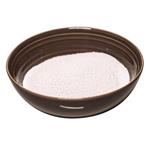- DIHYDRO JASMONE
-

- $1.00 / 1kg
-
2025-03-07
- CAS:1128-08-1
- Min. Order: 1kg
- Purity: 99%
- Supply Ability: 20tons
|
| Product Name: | 2-Pentyl-3-methyl-2-cyclopenten-1-one | | Synonyms: | 3-METHYL-2-PENTYL-2-CYCLOPENTEN-1-ONE;3-METHYL-2-PENTYL-2-CYCLOPENTENONE;3-Methyl-2-(n-pentanyl)-2-cyclopenten-1-one;3-methyl-2-pentyl-2-cyclopenten-1-on;3-methyl-2-pentylcyclopent;Jasmone, dihydro-;Tetrahy-dropyrethrone;2-N-AMYL-3-METHYL-2-CYCLOPENTEN-1-ONE | | CAS: | 1128-08-1 | | MF: | C11H18O | | MW: | 166.26 | | EINECS: | 214-434-5 | | Product Categories: | | | Mol File: | 1128-08-1.mol |  |
| | 2-Pentyl-3-methyl-2-cyclopenten-1-one Chemical Properties |
| WGK Germany | 2 | | RTECS | GY7302000 | | TSCA | Yes | | HS Code | 29142990 | | toxicity | The acute oral LD50 in rats was reported as 2.5 g/kg (1.79-3.50 g/kg) (Keating, 1972). The acute dermal LD50 value in rabbits was reported as 5 g/kg (Keating, 1972). |
| | 2-Pentyl-3-methyl-2-cyclopenten-1-one Usage And Synthesis |
| Aroma | Intensely floral and fresh odor with fruity
and somewhat Myrrh-like undertone. 2-Pentyl-3-methyl-2-cyclopenten-1-one is
often described as the "closest to ci&Jasmone
in odor". In proper dilution it has a pleasant,
sweet, herbaceous-floral taste which is easily twisted towards a fruity note in presence of
traces of fruity chemicals. It has an excellent
softening effect upon the overly "chemical"
fruit materials. | | Uses in Perfume | 2-Pentyl-3-methyl-2-cyclopenten-1-one is widely used in perfume compositions, not
only for artificial Jasmin and Bergamot, but
in general as a floralizer in the more fruityfloral fragrance types: Ylang, Lily, Tuberose,
Magnolia, etc. and it introduces a pleasant
undertone in Citrus type fragrances. | | Chemical Properties | 2-Pentyl-3-methyl-2-cyclopenten-1-one is a colorless,
slightly viscous liquid with a typical jasmine odor, resembling that of the naturally
occurring (Z)-jasmone. Dihydrojasmone is produced by an acid-catalyzed
rearrangement of 4-methyl-??-decalactone, which is readily obtained by
radical addition of 2-octanol to acrylic acid.
Dihydrojasmone is used in perfumery in jasmine bases and, more generally, in
floral and fruity fragrances. | | Chemical Properties | 3-Methyl-2-(n-pentanyl)-2-cyclopenten-1-one has a fresh, fruity, jasmine odor with woody and herbal nuances. | | Occurrence | Has apparently not been reported to occur in nature. | | Uses | flavors and fragrances | | Preparation | Hexyl bromide plus levulinic ester yields a lactone, which is reacted with polyphosphoric acid or phosphorus pentoxide
to produce hydrojasmone. | | Definition | ChEBI: 3-methyl-2-pentylcyclopent-2-en-1-one is a cyclic ketone. | | Taste threshold values | Taste characteristics at 10 ppm: sweet, floral, green, herbal with a citrus nuance. | | Synthesis Reference(s) | Canadian Journal of Chemistry, 56, p. 2301, 1978 DOI: 10.1139/v78-379
Journal of the American Chemical Society, 92, p. 7428, 1970 DOI: 10.1021/ja00728a029 |
| | 2-Pentyl-3-methyl-2-cyclopenten-1-one Preparation Products And Raw materials |
|